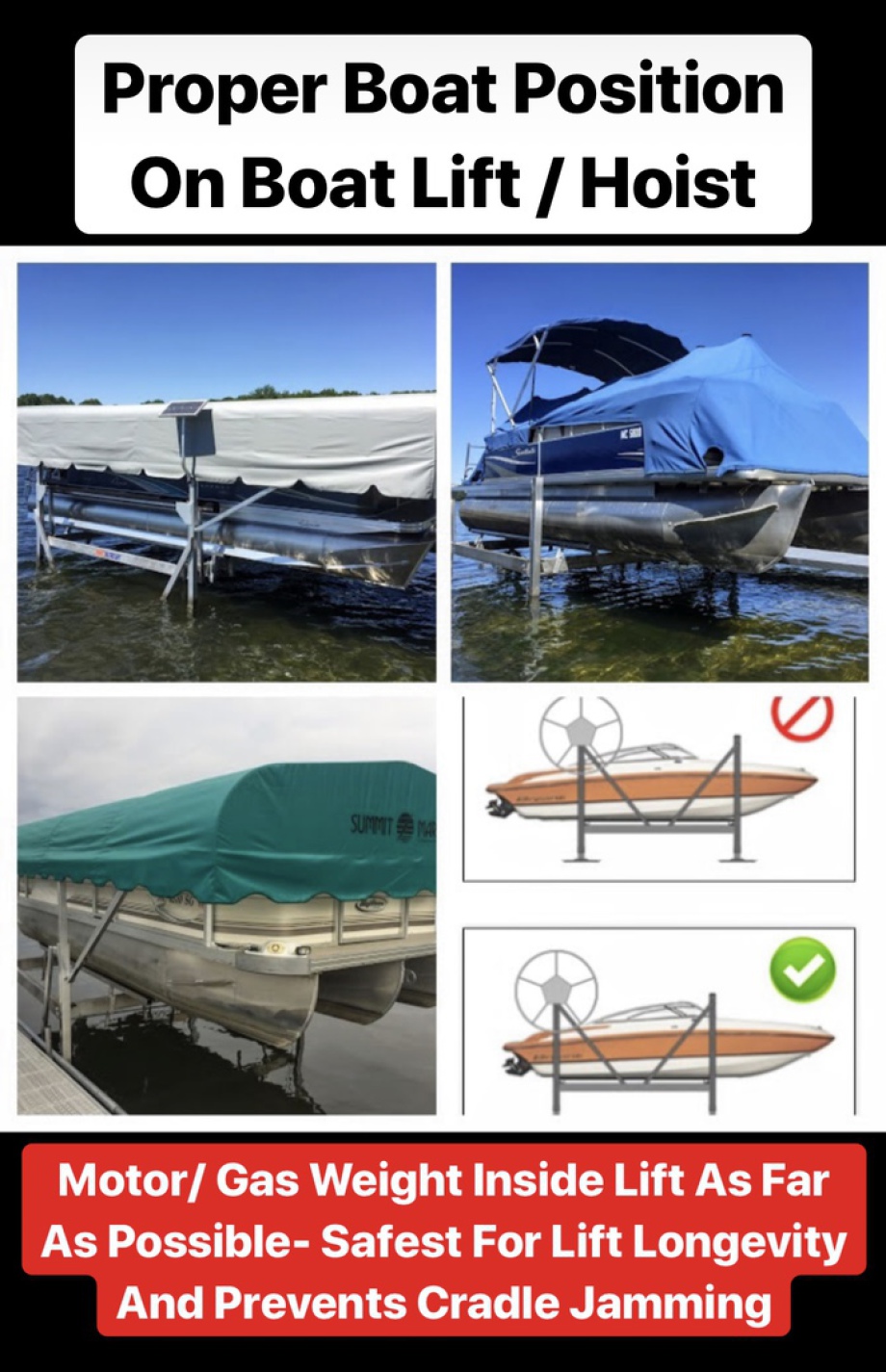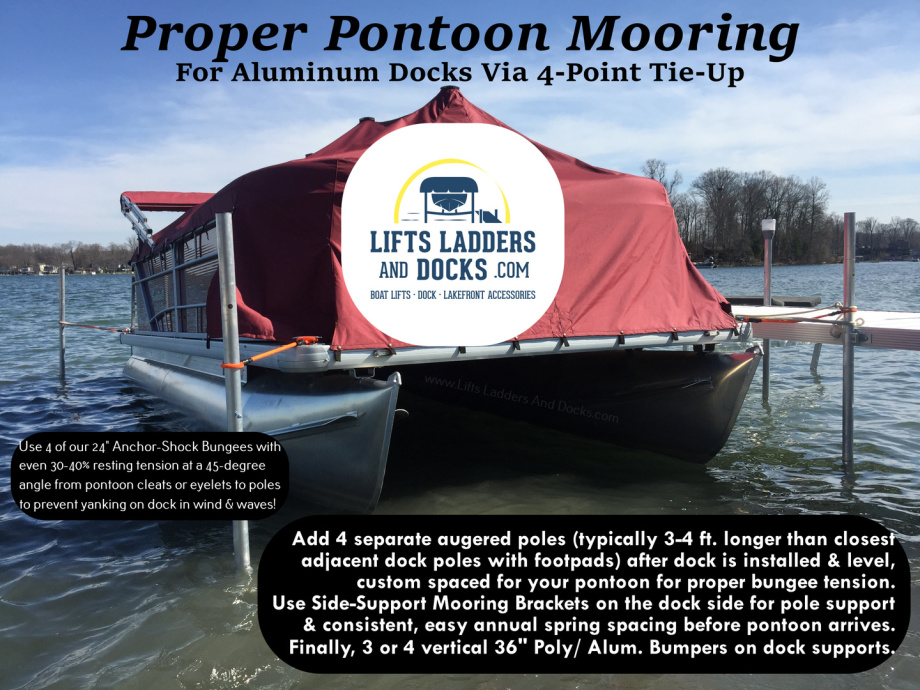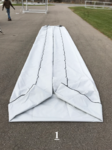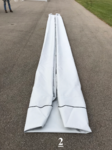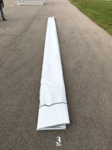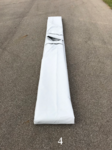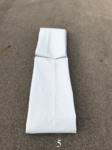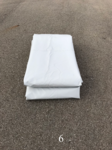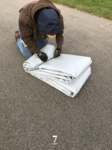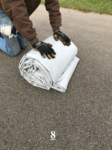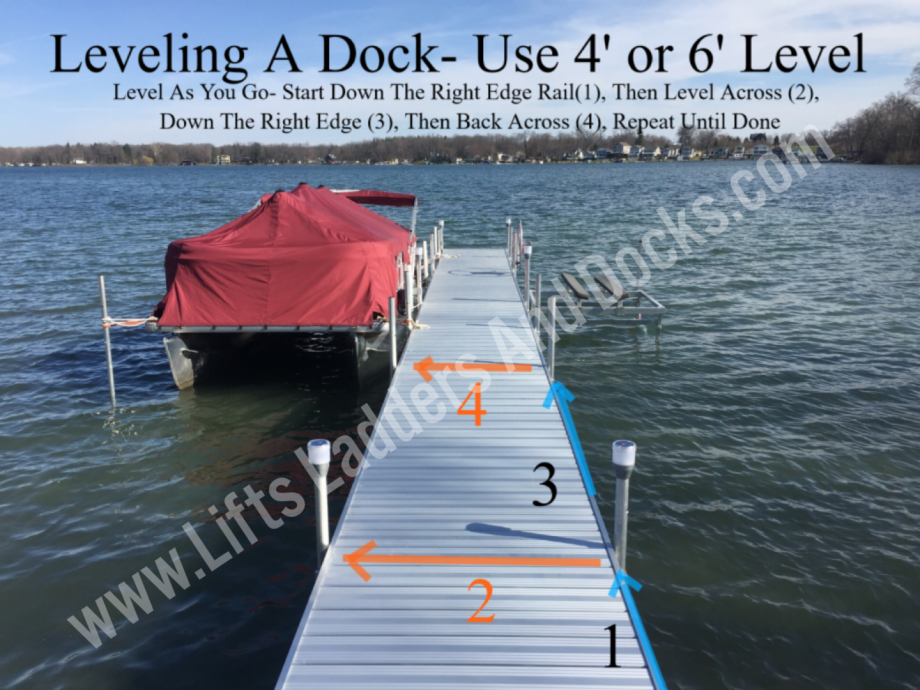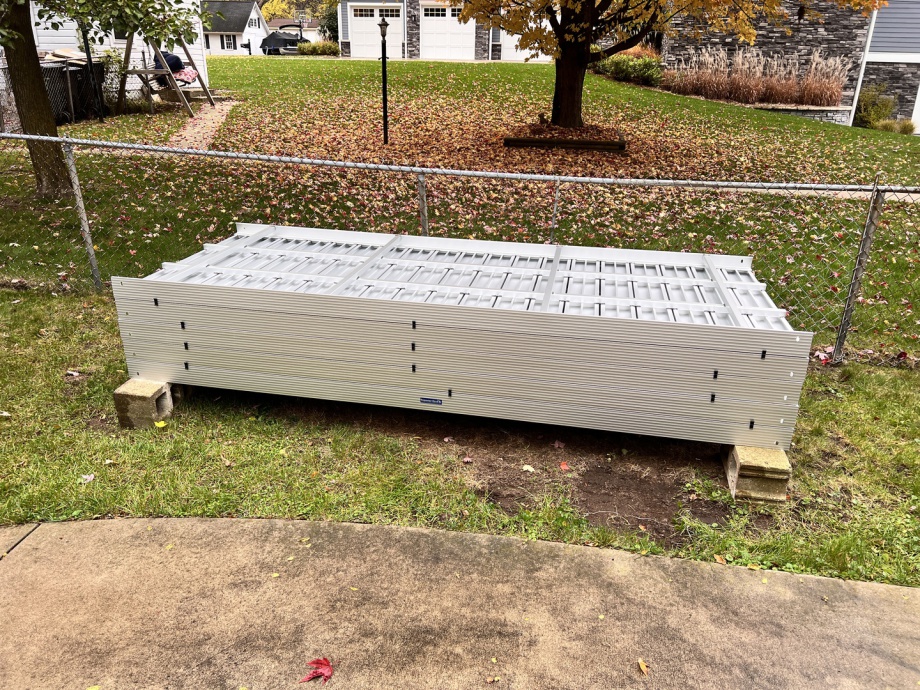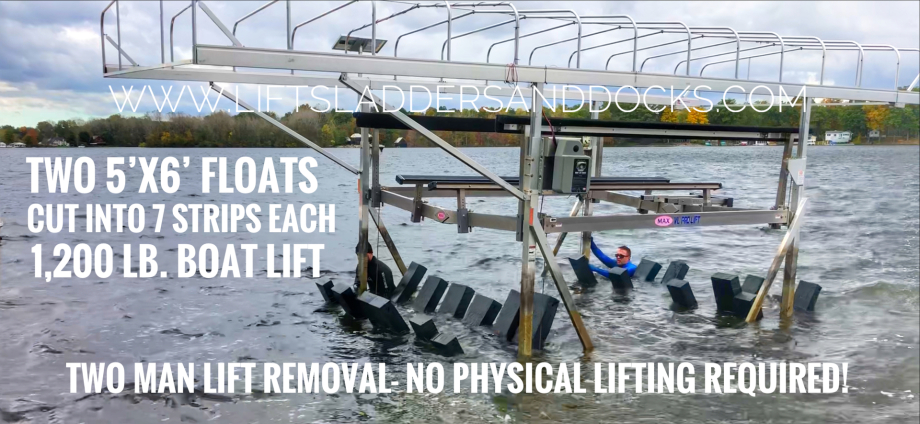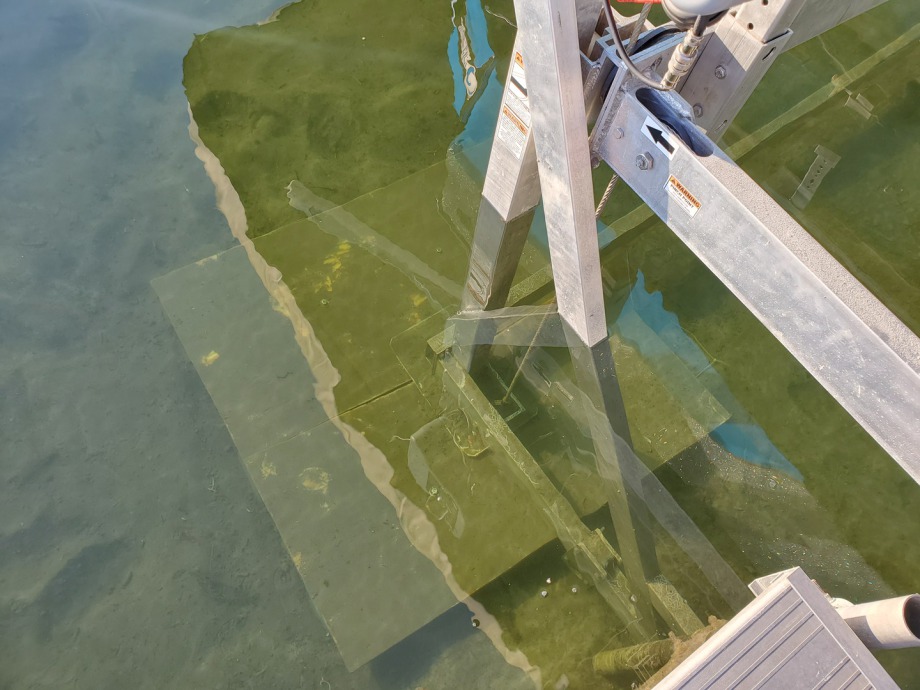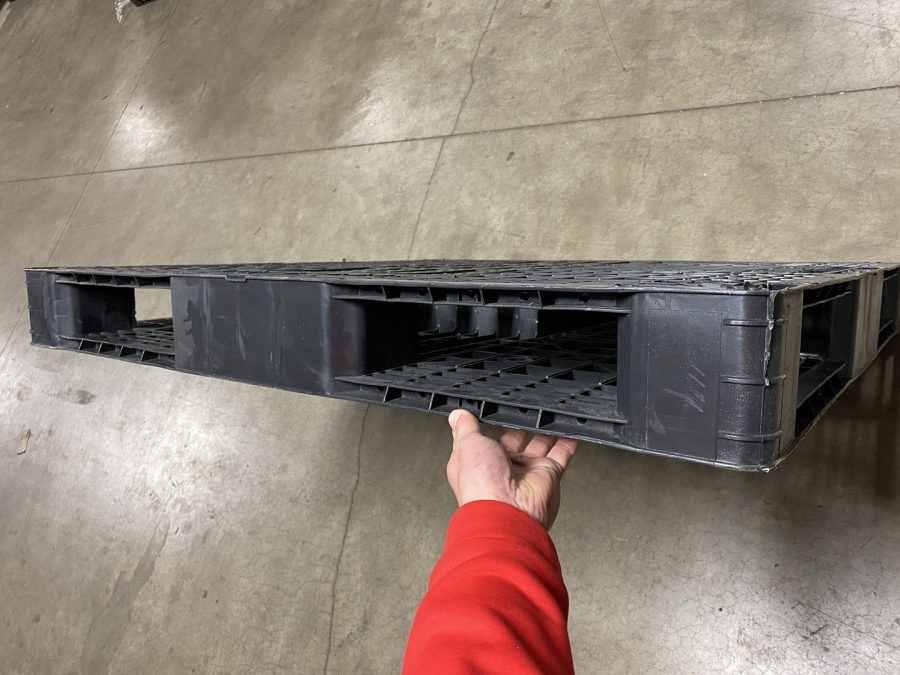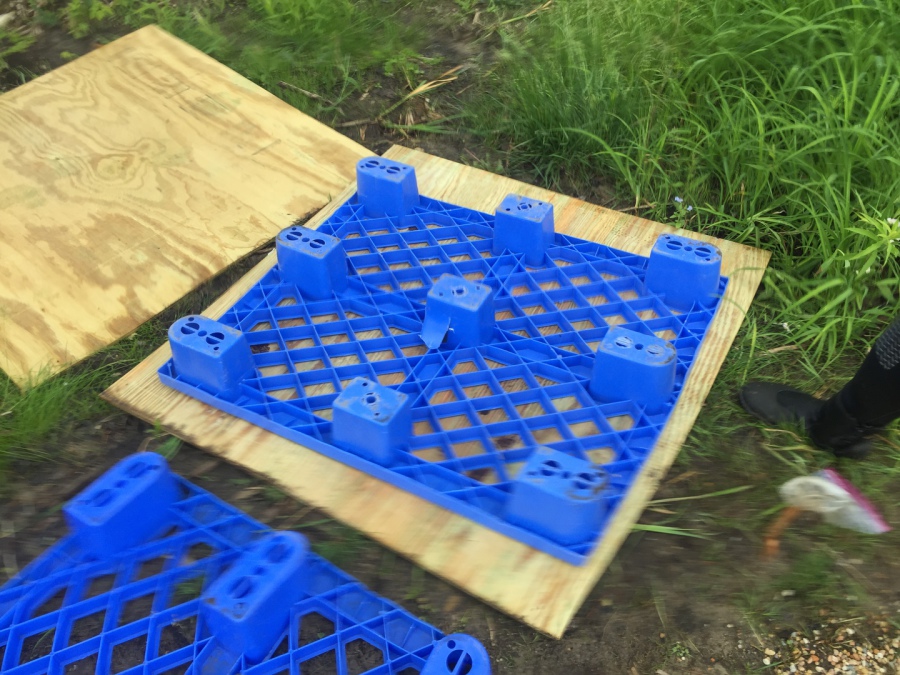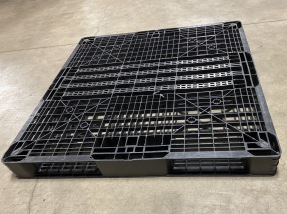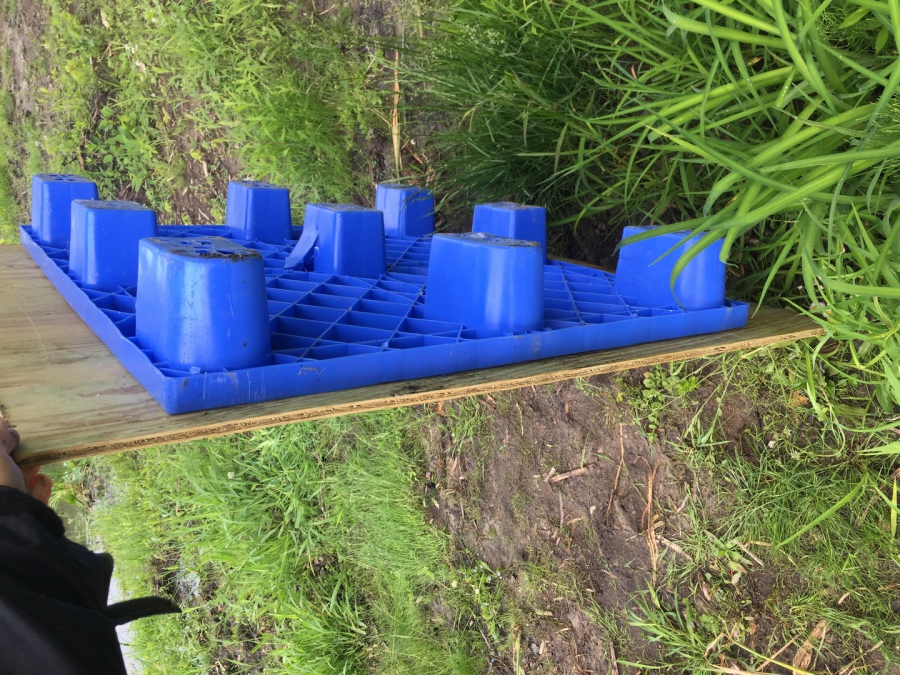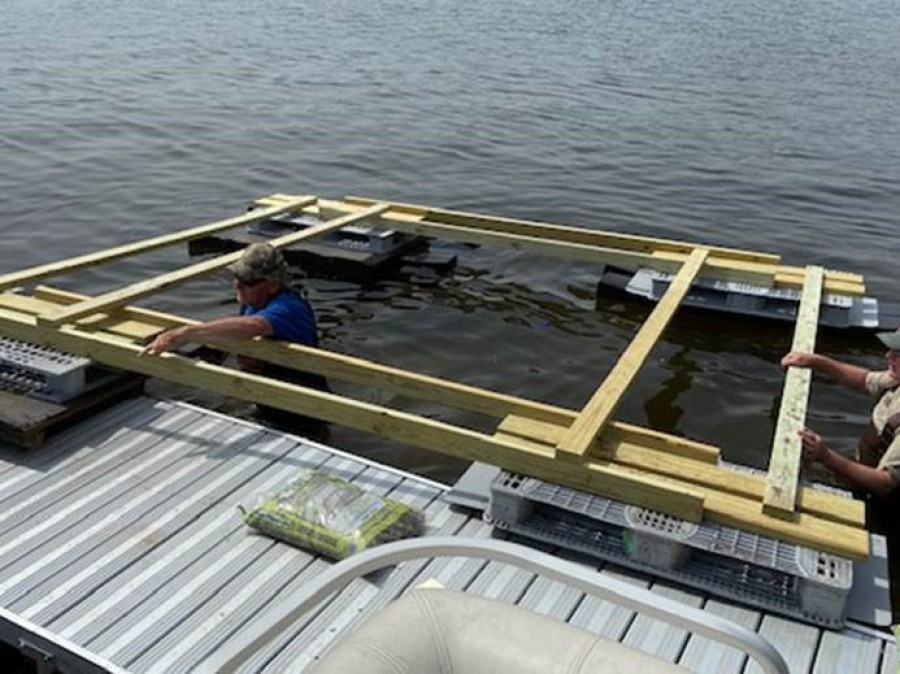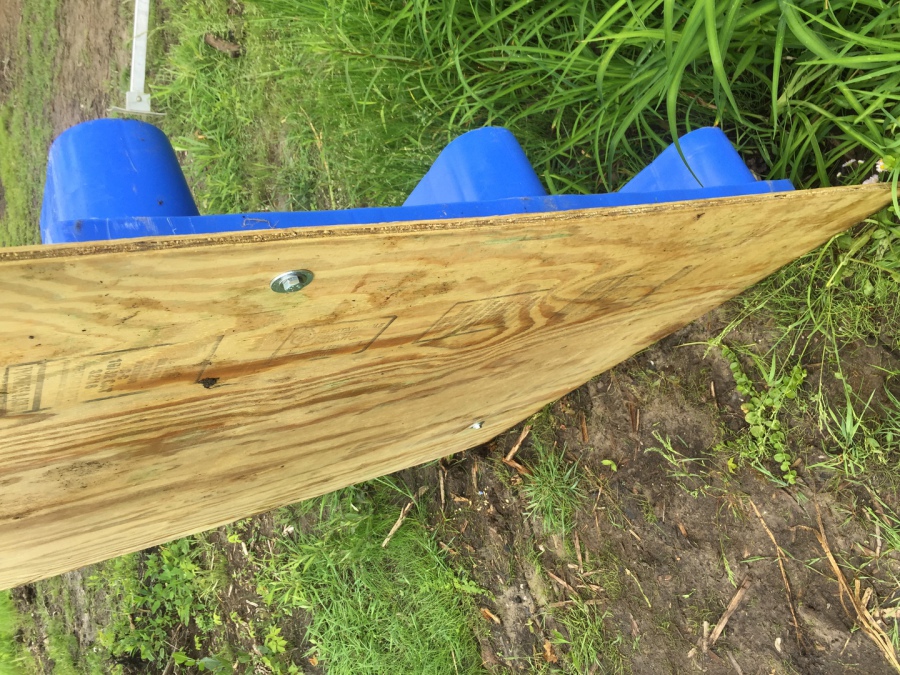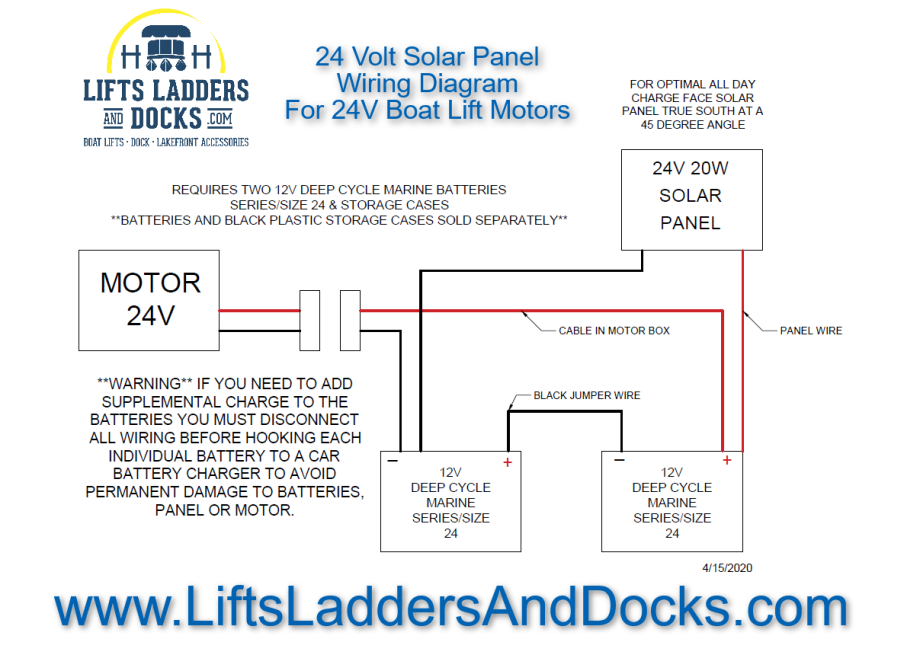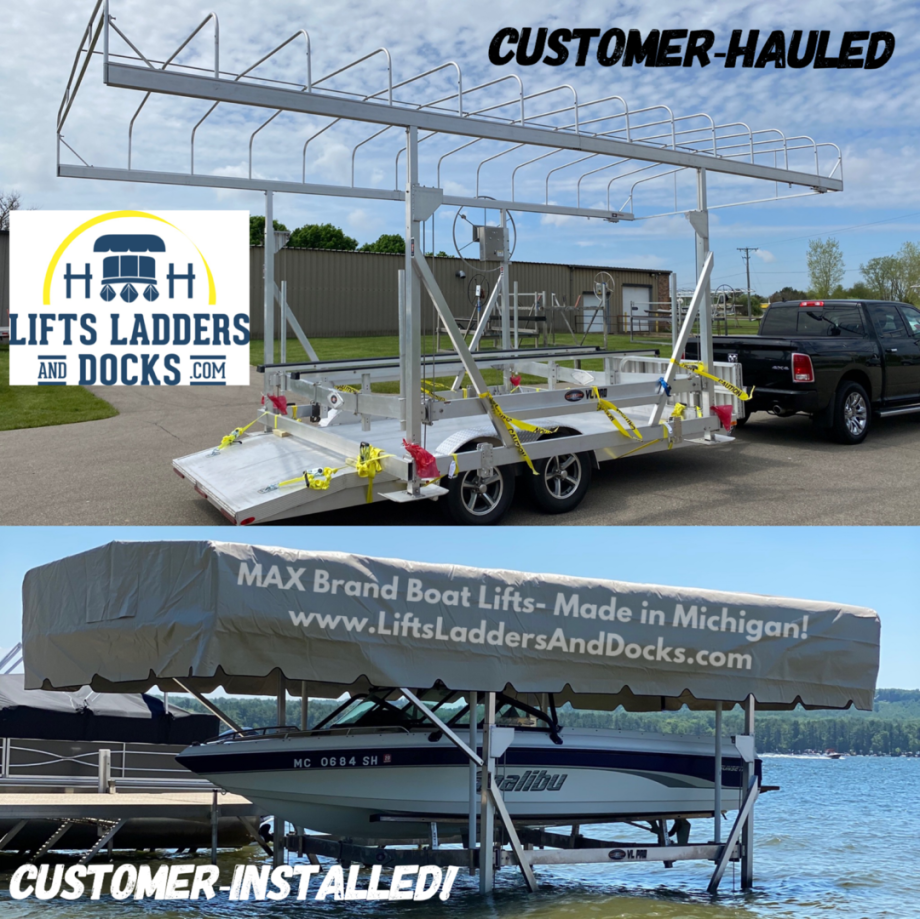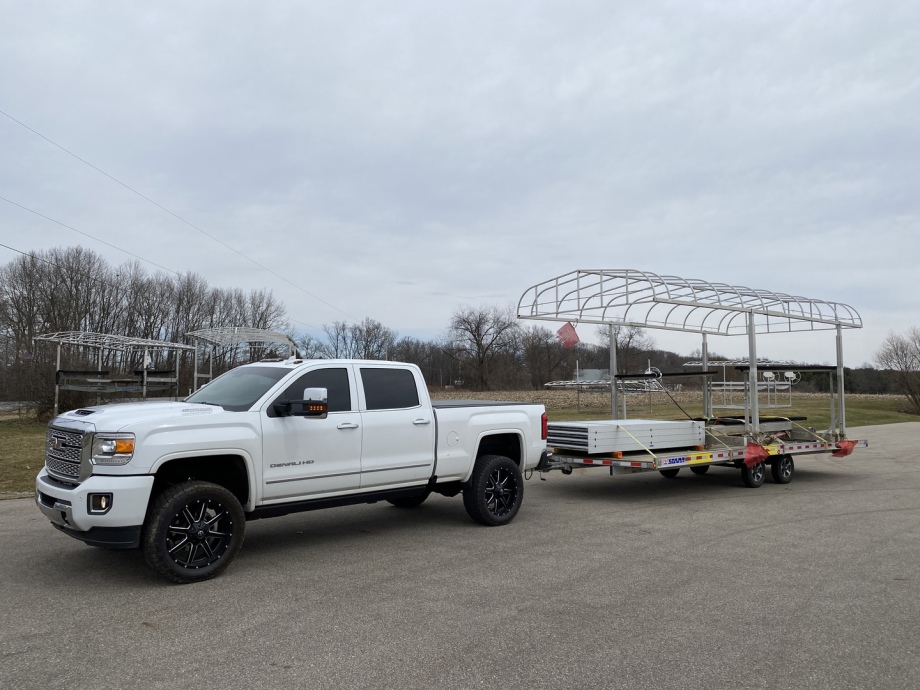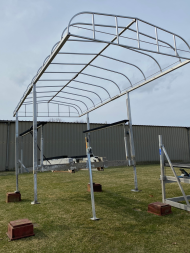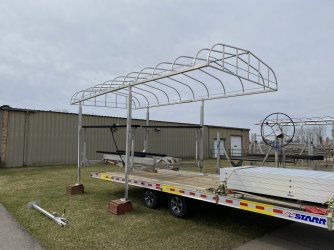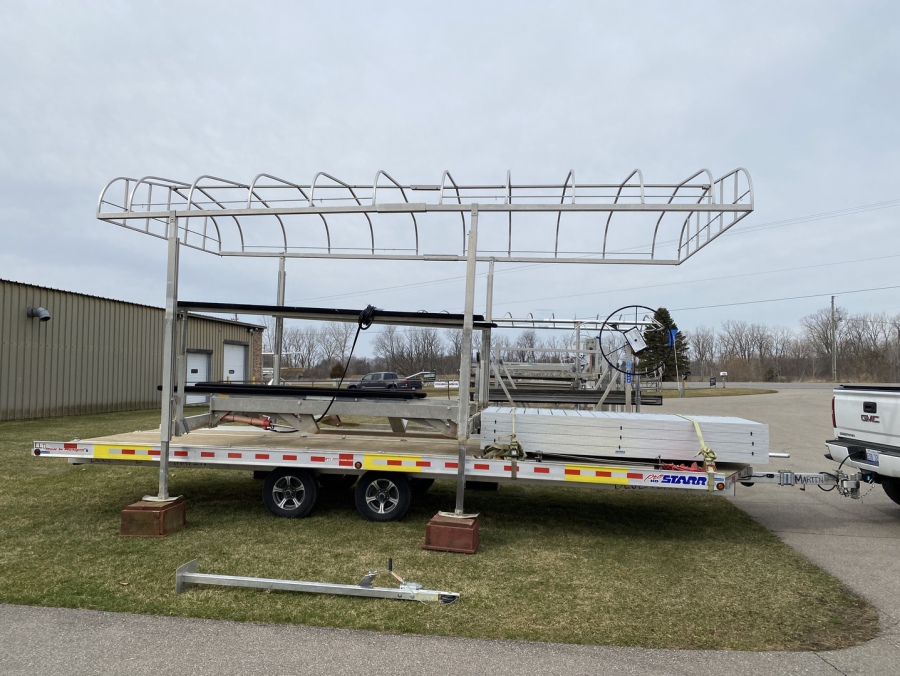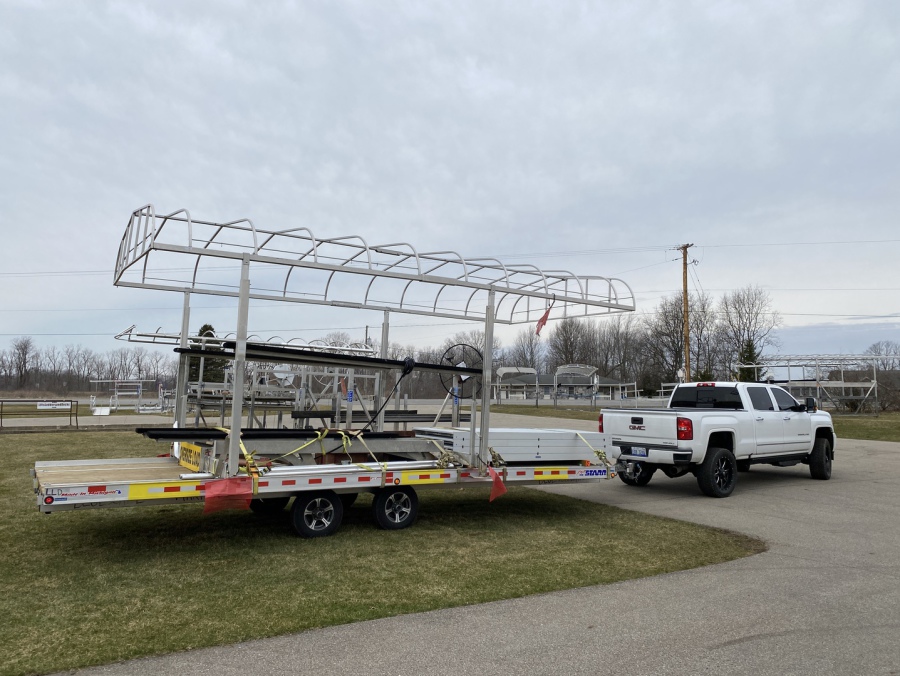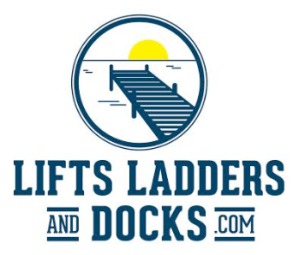Helpful Tips and Tricks
Please enjoy these helpful tips and tricks for a simpler and easier workload each summer! Start enjoying installing and removing your dock and boat lift again- with the right knowledge and tools, there's no point in paying someone else to do it! Get the job done safely and correctly, and on your own timeline to maximize your boating season!
Use these tips and techniques at your own risk, always hire a professional or consult an experienced neighbor if you are unsure of what exactly you are doing!
No offense- some of you have no business attempting any of this (and probably already know it!), don't let your ego hurt you or your friends that help you!
Wet Suit Tips & Gear Recommendations
Safe Boat Lift Operation And Maintenance
Please Click The PDF Brochure Below To Open Our Boat Lift Tips Flyer:
Canopy Cover Folding And Storage
Be sure to clean the bird poop, leaves, etc off in the fall on a nice day (you can use a mild dish soap or car wash solution and gentle brush) and then let the cover dry all day in the sun. Keep flipping or adjusting the canopy periodically so the wrinkles will get a chance to dry out. Put the cover away in storage only if it is bone dry, otherwise you risk mildew which may be at least partially permanent. Also, store it in your basement where it is a constant temperature in the winter (versus being exposed to cold, dry, harsh air and rodents in the garage), vinyl is like your skin and can dry out when exposed to cold and extremely dry weather all winter. Dryer sheets placed around and inside the canopy can help deter rodents from chewing holes all through it, making it look like swiss cheese. Treat your vinyl in the spring (and periodically) with a premium vinyl protectant, like 3M Brand's '303' Spray. The lifespan of your cover is entirely subjective based on your sun and wind exposure, tree sap, bird poop, etc., but this procedure will help you get the most out of it.
Dock & Pier Installation and Removal
The Basics:
- Always keep your aluminum dock 12-18" above the water at its highest point (ideally 16-18" for most inland lakes)- extremely rough areas with heavy wake boat traffic may require more like 24"+ to avoid damage. Yes, we know sometimes that means your dock will be 3 feet out of the water at the end of summer drought, even if you started at only 12" clearance, which may cause problems when trying to step in/out of pontoons or fishing boats that do not use a lift- unfortunately, you'll just have to readjust the dock accordingly! Anodized aluminum is resistant to staining (but not perfect) and waves from wake board boats can mangle a dock if they are set too low, or the twisting motion of waves when a dock is submerged during spring flooding can rip the corners of the aluminum out! If you are on an extremely rough lake (yacht traffic, connected to the Great Lakes, i.e. Grand Traverse Bay, etc.) you will likely need to keep your dock at least 3 feet out of the water and might benefit from composite dock which allows waves to surge through the panels. Your old wooden dock indeed may have lasted 30 years being only 4" out of the water, but that is because the wood itself or the screws/structure points twist/ flex significantly and the bolt holes simply wallow themselves out over time as the wood breaks down, rather than tearing the aluminum corner- aluminum dock is beneficial in nearly every way, except for twisting caused by pontoons being moored directly to it, or twisting from waves, in which wood undoubtedly could withstand more abuse. The trade-off is an 86 lb. dock section for 4x10' aluminum versus 180-200+ for wooden surface with aluminum stringers, or 250-300 lbs. for full wooden stringers and joists.
- Always use 4 separate augured mooring poles and bungee lines if you plan to tie a boat up to your dock- aluminum dock is lightweight and incredibly strong, but tying your giant pontoon (aka wind sail) directly to your lightweight dock on foot pads is just asking for trouble- we've seen docks flipped from people trying to cheap out on doing it the right way. Yes, you may have done it in the past with your incredibly heavy wooden dock with steel augured poles, that does not matter now. Your neighbors will also be thankful when your boat doesn't drift away in a storm and damage their dock too. With that said, anything is possible, a boat lift is always the safest option and in the right storm anything can happen no matter what precautions you take- we've seen boat lifts flipped WITH boats on them!
- Use 1 of our foam floats cut into thirds, or two cut into halves and stacked to your necessary height to help 1 person effortlessly walk the dock in and out like a wheelbarrow while your buddy grabs the support, then meets you at the shore to help stack the dock section.
- ALWAYS stack your dock on cinder blocks or 6x6" boards or something similar to elevate off the muddy ground and needs to be high enough to help prevent leaves from piling up against the side of the dock, potentially staining your dock. We flip our top section upside down so that leaves that fall on top of it will not be on the visible surface of the dock. Saving and reusing your dock spacer clips for annual stacking is helpful! Do NOT try to wrap with a tarp or shrink-wrap- this will shred many tarps, but more importantly it will actually trap more moisture, leaves and can cause more damage than an uncovered stack! Avoid stacking near trees when possible, not only for the leaves but also for falling limbs during winter ice storm which can cause damage.
- When you remove your dock, sweep or wash off bird poop, leaves, mud, etc. and take them out in the exact reverse order which they went in, and keep them oriented the same direction. I.e., your last section installed should be the first to come out and will end up on the bottom of your stack, and keeping it the same direction it came out of the lake ensures that any extra/ special holes drilled in the sections for platform supports, etc. will still be in the correct spot next year. Stack all supports in order as well, and it can help to label them with left and right to help minimize the amount of leveling required the next year, because there can be substantial height differences from side to side due to springs, motor holes, muck, etc.
Boat Lift & Boat Hoist Installation and Removal
The Basics:
- NEVER put your canopy cover on the boat lift without the boat on it! Every year, we have calls from people with flipped and destroyed boat lifts that either left their canopy cover on year-round (stupid idea in general, the winter weather is trashing your expensive cover and snow weight can collapse the canopy frame), or installed the cover at the time of lift installation before the boat is there. One guy installed his on shore 20 minutes before he was going to launch his boat and a storm kicked up and flipped the lift while he waited for the rain to stop. Not only is installing it on shore far harder to do while on ladders or tip-toeing around, sometimes boat deliveries get delayed or other things happen and you might get in trouble! Likewise, if you plan to remove your boat for service or take it with you on a road trip vacation, you should remove the cover before pulling the boat to avoid expensive accidents! We know of several lifts that flew over 100 feet away from their original location, and have video of another customer's rolling over his dock at night.
- Crank your boat lift up at the end of the season as soon as you remove the boat- this will keep your wooden/ carpeted bunks from prematurely rotting, and will keep your lift cradle (pulleys, cables, bunks- all the important stuff) from getting gunked up and worn out from waves bashing it around inside the lift and blowing out the pulleys or bearings from side to side movement. This is especially important if you do not install/ remove your own lift and boat, sometimes the lift is dropped in weeks before the boat arrives if you hire it out, which is plenty of time to cause damage every year.
- Always make sure that your boat lift cradle (the part that moves up and down, which your bunks are attached to) is cranked up at least a foot out of the water to prevent it from getting gunked up and avoid damage from waves smashing into it which can prematurely blow out your pulleys and bearings from unnecessary side to side wobble- this is especially true if you have a motor and therefore no excuses about being lazy with a manual crank wheel! If you cannot get that kind of clearance out of the water due to boat clearance, your canopy height or the boat lift legs may need adjustment.
Boat Lift Installation In Deep Muck
Deep muck around your boat lift? The cheapest option is to simply buy plastic pallets as a strong backbone (can be found on Facebook Marketplace, Craigslist, etc. for around $10-20 each) and then bolt 3/4" marine-grade treated plywood to the surface to create a snowshoe effect- this allows your boat lift to stay more level and require fewer adjustments and headaches than usual. We prefer the black style shown below which has 2 faces and is much stronger than the blue ones shown, giving a little more backbone structure to the wood to help with the heavier boats, and they settle into the muck a little better and may stay in place annually depending on how much they sink. Also, you can add sandbags or backs of rock between the layers to make them neutrally buoyant (like the photo below of the wooden frame setup that one customer built to ensure all 4 stay in place annually, but would have been far too buoyant without rocks- this will only work on a flat lakebed, most people use 4 independent pallets) for easier installation with fewer people to reduce having to hold them down while placing the lift, or add extra once in place to ensure that they stay put for next year.
The plywood (and sometimes the plastic pallet itself) are buoyant, so it can be a pain to keep them down while using our boat lift foam strips to lower your boat lift onto the pallets in a controlled fashion, but if you have knee deep muck, that is far easier and cheaper than any alternative. Make sure that the feet of the boat lift are centered on the board/ pallet to help avoid slipping which could cause injury or damage to the lift if the lift were to suddenly slip off the pallet and sink into the muck.
Use this method and any tips found on our page at your own risk and always hire a professional whenever you are in doubt!
First Time Boat Lift Setup- Bunks and Canopy Position Adjustments
24V Boat Lift Motor (LiftTech or Boat Lift Boss)
Solar Panel Wiring Diagram
Atlas Boat Lift Assembly Time Lapse Video
Atlas, Shore Station, LSP (Or Similar) Canopy Frame Mounting
Max Boat Lift Assembly General Overview (Time Lapse)
Boat Lift Transportation
Easy Boat Lift Loading Procedure
On Flat-Bed or Car Haulers
Lifts Ladders And Docks.Com:
A Division of BlueScape, Inc.
Store and Warehouse
Google Maps & Reviews- Click HERE
11811 S. Shaver Road
Schoolcraft, Michigan 49087
(Just South of Kalamazoo, MI)
For Quotes or Service:
Brent
Boat Lift & Dock Sales and Service
Text (Main #) or Call:
269-888-1419 Ext. 101
Click below for a quick quote:
_________________
Dennis
Dock & General Sales
Call:
269-888-1419 Ext. 102
Click below for a quick quote:
_________________
Dave
Composite Parts & Dealer Sales
Call:
269-888-1419 Ext. 103
Click below for a quick quote:
Ed
Dock & Dealer Sales
Call:
269-888-1419 Ext. 104
Click below for a quick quote:
Boating Season Hours:
Tuesday-Friday 12:00 pm - 5:30 pm
Saturday 10 am - 1 pm
Sunday & Monday- CLOSED
We're Available Most Business Days In The Mornings By Appointment- Just Text Ahead For Availability
WE ACCEPT:
Cash or Checks
Or
All Major Credit / Debit Cards with a 4% Fee Added To Total Bill


